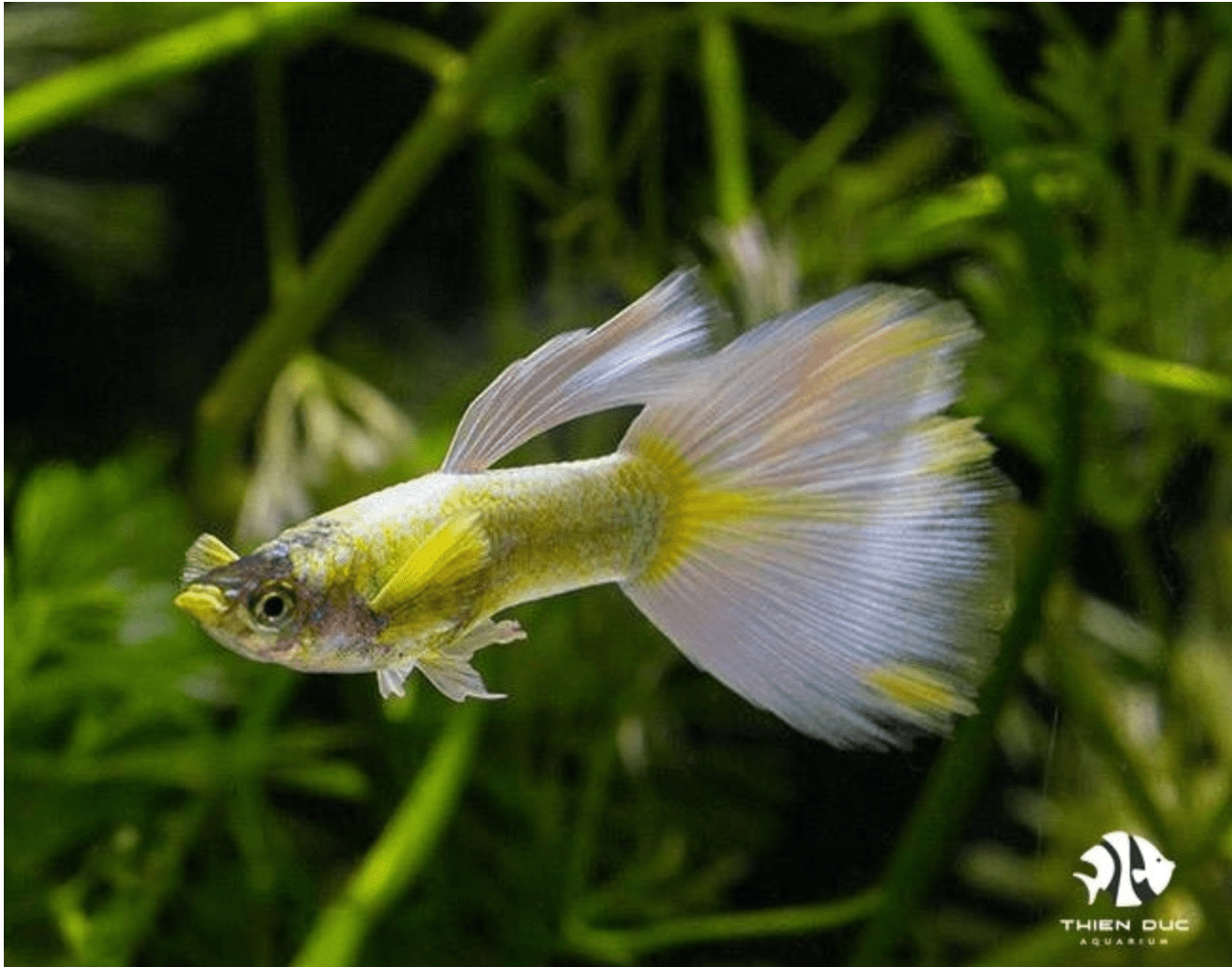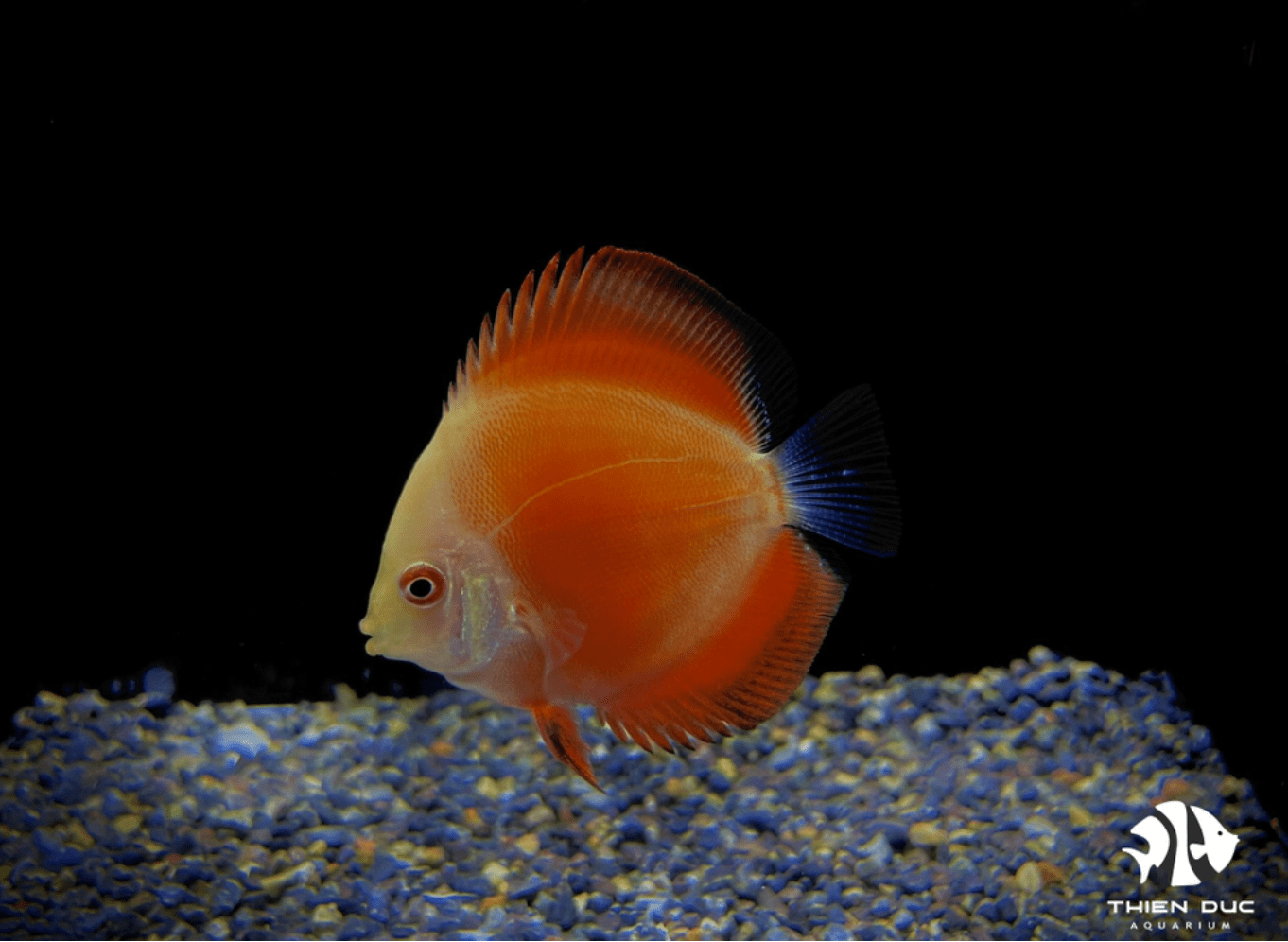Driftwood for Fish Tanks: A Guide to Safe Usage
Driftwood is a beautiful and useful element in the art of aquascaping. This guide from THIENDUC AQUARIUM will explain how to safely select, prepare, and use driftwood for fish tanks, helping you create a natural and thriving underwater ecosystem.
The Unseen Benefits of Using Driftwood
Beyond its undeniable visual appeal, a well-chosen piece of driftwood for fish tanks offers a host of advantages that contribute to the overall well-being of your aquatic life. These benefits extend from water chemistry to the behaviour and health of your fish, making driftwood a cornerstone of any truly natural setup.

Aesthetic Appeal
The most immediate benefit of adding driftwood is its ability to create a visually striking and natural habitat. Each piece is unique, with its own shape, texture, and character, allowing for endless creative possibilities. It can mimic the look of a sunken forest, a gnarled root system, or a fallen tree branch, providing a sense of realism and depth that no artificial decor can match. The presence of driftwood can make a simple tank feel like a vibrant, living slice of a riverbed or jungle stream, providing a stunning centerpiece that evolves as plants grow and fish interact with it.
Fish Health and Water Chemistry
Perhaps the most significant benefit of adding driftwood for fish tanks lies in its impact on water parameters. As driftwood soaks in the aquarium water, it slowly releases tannins—organic compounds that give the water a light, tea-stained colour. For many hobbyists, this is a desirable effect, as it replicates the "blackwater" conditions found in the Amazon and other tropical regions. More importantly, these tannins slightly lower the water's pH and hardness, creating an ideal environment for a wide range of popular species, including many tetras, cichlids, and discus. The mild antibacterial and antifungal properties of tannins also help to prevent common fish diseases, contributing to a healthier, more resilient tank. The shelter provided by driftwood’s nooks and crannies reduces stress for shy or territorial fish, allowing them to feel secure and exhibit more natural behaviour.
Biological Benefits
Driftwood isn't just a decoration; it's an active participant in your tank's ecosystem. Its rough, porous surface provides an ideal substrate for the colonization of beneficial bacteria. These bacteria are the foundation of the nitrogen cycle, which breaks down harmful waste products and keeps your water clean and stable. Additionally, some species of fish, most notably plecos and certain types of catfish, will actively graze on the biofilm and soft wood on the surface of the driftwood for fish tanks, providing them with a natural and nutritious food source.

Types of Driftwood and Where to Get It
Choosing the right type of driftwood is a crucial first step. Different woods have varying densities, aesthetic qualities, and impacts on water chemistry. Knowing where to source your wood safely is equally important.
Common Types
-
Mopani Wood: A very popular choice for its dense, heavy nature which makes it sink quickly. It has a striking two-tone colour and a unique gnarled appearance. Be aware that it releases a significant amount of tannins initially.
-
Malaysian Wood: Also very dense and durable, Malaysian wood is known for its classic dark colour and smooth texture. It’s a reliable choice for any aquascape.
-
Manzanita Wood: Favoured for its beautiful, intricate branching structure, Manzanita is perfect for creating complex, tree-like aquascapes. It releases fewer tannins than Mopani or Malaysian wood.
-
Grapevine Wood: While visually appealing, this type is not recommended for long-term use in aquariums as it tends to rot and decompose relatively quickly underwater, which can cause water quality issues.
Safe Sources
When looking for driftwood for fish tanks, you have several options, each with its own pros and cons. The safest and most convenient option is to purchase wood from reputable local fish stores or online retailers. These sources provide wood that has been pre-treated and is guaranteed to be safe for aquarium use.
Just as we at THIENDUC AQUARIUM pride ourselves on our extensive system of wild fish, caught from the rivers and streams of Vietnam, Laos, Cambodia, and Thailand, we understand the value of bringing authentic, natural elements to the European market. Our commitment to quality mirrors the commitment needed to properly source and prepare the perfect driftwood for fish tanks. We work with the best farms and have many beautiful fish caught and tamed, and similarly, aquascapers should seek the best quality wood for their tanks.
You may also be tempted to collect your own driftwood from natural sources like beaches or rivers. While this can be a rewarding experience, it comes with significant risks. The wood may be contaminated with chemicals, pesticides, or other pollutants, and it may not be suitable for long-term submersion. If you choose this route, extensive and meticulous preparation is absolutely essential.
A Step-by-Step Guide to Preparing Driftwood
Proper preparation is the single most critical step in adding driftwood for fish tanks. Skipping this process can introduce unwanted pests, bacteria, or chemicals, and can cause significant water parameter imbalances.
Step 1: Cleaning
Begin by physically cleaning the wood. Use a stiff brush and water to scrub off all visible dirt, sand, and any loose bark. This initial step removes surface impurities and prepares the wood for the next stages. Do not, under any circumstances, use soap, bleach, or any other chemical cleaning agents, as these are highly toxic to fish and will remain trapped in the wood's pores.
Step 2: Soaking
The most important but time-consuming step is this one. Submerge the wood completely in a large container of water. The two main goals of soaking are to remove tannins and to make the wood waterlogged so it will sink. For some types of driftwood for fish tanks, this can take days, or even weeks. You must change the water daily to remove the tannins that have leached out. Continue this process until the water remains only a faint yellow or is completely clear.
Step 3: Boiling (Optional but Recommended)
For maximum safety and efficiency, boiling your driftwood is a highly recommended step. This process sterilizes the wood, killing any harmful bacteria, fungi, or parasites that may be hidden within its pores. Boiling also significantly accelerates the process of leaching out tannins. Boil the wood in a large pot for several hours, changing the water as it becomes dark. A word of caution: boiling can release a large amount of tannins, so use a pot that you don't mind getting stained.
Step 4: Placing in the Aquarium
Once the driftwood is clean, soaked, and sinking, it's ready to be added to your tank. Ensure it is fully waterlogged and will not float. If it still has a tendency to float, you can weigh it down with a rock or a piece of slate until it sinks on its own. Position the driftwood for fish tanks to create a stunning visual arrangement and to provide ample hiding spots for your aquatic inhabitants.
Possible Issues and Fixes
You might run into a few common problems even if you are well prepared. Rest assured, these are usually easy to manage and are part of the natural process of adding driftwood for fish tanks to your setup.
Tannin Release (Brown Water)
After a while, you may notice your aquarium water turning a brownish or yellowish colour. This is simply the result of remaining tannins leaching from the wood. If you find the colour unappealing, you can manage it through regular water changes and by adding activated carbon to your filter. The activated carbon will absorb the tannins, quickly clearing the water.

White Fuzz or Slime
It is very common for a white, fuzzy slime to appear on the surface of newly added driftwood. This is not a reason for alarm. It is a harmless biofilm composed of bacteria and fungi that feed on the leftover sugars in the wood. This biofilm will eventually disappear on its own as the food source is depleted. Many aquarium creatures, such as snails, shrimp, and certain types of catfish, will happily graze on it.
Floating
If your driftwood for fish tanks continues to float despite extensive soaking and boiling, be patient. The process of becoming waterlogged can sometimes take longer for certain types of wood. You can secure the piece to a piece of slate using stainless steel screws or use a rock to hold it down until it is fully submerged.
Conclusion
Adding a piece of driftwood for fish tanks transforms your aquarium into a living work of art, with numerous benefits from enhancing water chemistry to providing vital shelter for your fish. Tại THIENDUC AQUARIUM, chuyên môn về cá cảnh đã giúp chúng tôi đánh giá cao nghệ thuật thủy sinh. Chúng tôi hy vọng hướng dẫn này sẽ giúp bạn tạo ra một hệ sinh thái đẹp và năng động.
Contact Information:
-
Address: 57 Le Thi Sieng, Tan Thong Hoi, Cu Chi, Ho Chi Minh City, Viet Nam
-
Mobile: +84903912501
-
Office: +84982577871
-
Email: thien@thienducaquarium.com










